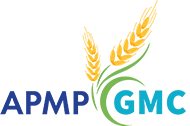Dear GMC,
I’m interested in finding help from APMP on sorting through procurement portals. There are so many portals that we, as proposal managers, need to keep track of. It takes time and resources to register, and there are often lengthy online registration forms. We need accurate log-in credentials so that we can submit proposals on time, but my practitioners are making accounts, and nobody is keeping track of the log-ins. Are there any best practices out there that could help?
Sincerely,
Susan from Chicago
Dear Susan,
Boy, oh boy, did you stumble on the elephant in the room with this question. What seems like a simple enough issue can be quite a thorny one. Like much of the miscellany that we come across in our day-to-day lives, this is one of those things that is not directly related to proposal management, but often gets thrown on our laps to figure out. Well, fortunately we are a clever and resourceful bunch. Here are some thoughts on how to find a solution that works for your organization.
First, consider the people in your organization that need to have access to this information. Are the procurement portals that you work with primarily only to submit proposals? Or will the portal need to be accessed by other groups, such as implementation, contracts, or billing? Who should then own the maintenance of the information? Maybe that is your team, or maybe it makes more sense to have sales and distribution own it, or maybe someone else altogether. It all depends on how your organization functions.
Assuming your team needs to own it, decide whether you want everyone to have access to it, or if you want to be the proverbial gatekeeper of the information. Does it make sense to funnel all account signups through your team, or should other areas contribute? Do you want everyone to be able to edit, or do you want to lock that down?
Once you know who will need access, you can move on to figuring out where to house the information. A shared drive might be a good solution if it is just a list that you and your team is going to maintain. However, if multiple areas need access, a Teams or SharePoint site would offer better access with controls to limit who can edit.
Next, think about what you need to track. How many logins do you need to track? What information will you need to include? Some of the elements you might want to think about keeping tabs on include the site name, link to the login, username and password, any fees associated with the site, and expiration dates. You may also want to consider tracking the bids you submitted on that site and whether it will be used for downstream efforts like contract negotiation or billing.
The complexity of the information you need to include will inform which tool makes the most sense. A spreadsheet is a simple solution that allows you to easily sort the information. If you have Microsoft 365, you could use the Lists app. If you need to have multiple areas submitting information, you could use the Forms app to collect information, which will automatically populate a spreadsheet. There are also pre-built solutions online, like LastPass, which some teams are using to safely house login information.
Once you create your solution, the key to success is to communicate it across the organization, and not just once, but several times. Make sure the appropriate areas are informed on where they need to go to set up and track accounts. If multiple areas will be able to set up accounts, you may want to create a cheat sheet with instructions and common information they might need, such as EIN, company type, SIC or NAICS codes, or whatever other information generally appears on these portals. Use whatever communications methods are already in place to notify appropriate areas. You may even consider sketching out a communications campaign with regular touchpoints to remind people of the process.
For many organizations, this is not a simple fix, but rather a cross-departmental collaboration. Use your proposal skills to project-manage this effort! Depending on the complexity in your organization, this may include a “kickoff call” with the appropriate stakeholders, a pilot program, yes, even meetings like color reviews to validate your solution!
If you come up with an awesome solution that benefits the organization, here’s the most important part: make sure you and your team get credit for it. Include your efforts in your annual review with your manager, write up a story to include in your internal company news, or nominate yourself for awards or get a trusted business partner to do it for you.
So, there you have it! If you choose to tackle this, please write in and let us know how it went. Or even better, reach out to us to include your success story in the GMC Blog.
Do you have a proposal problem? A sticky situation with a submission? Send your questions to Dear GMC using our online form here.
Just a little disclaimer: The advice offered in this column is intended for informational purposes only. Use of this column is not intended to replace or substitute for any professional, financial, medical, legal, or other professional advice. This column, its author, and APMP GMC are not responsible for the outcome or results of following any advice in any given situation. You, and only you, are completely responsible for your actions.
Heather first encountered the acronym “RFP” when seeking ways to diversify funding sources for a human services company in 2012 and hasn’t looked back since. Since then, she’s moved on to lead proposal teams in both the commercial and government sectors, refining processes and developing efficiencies along the way.

